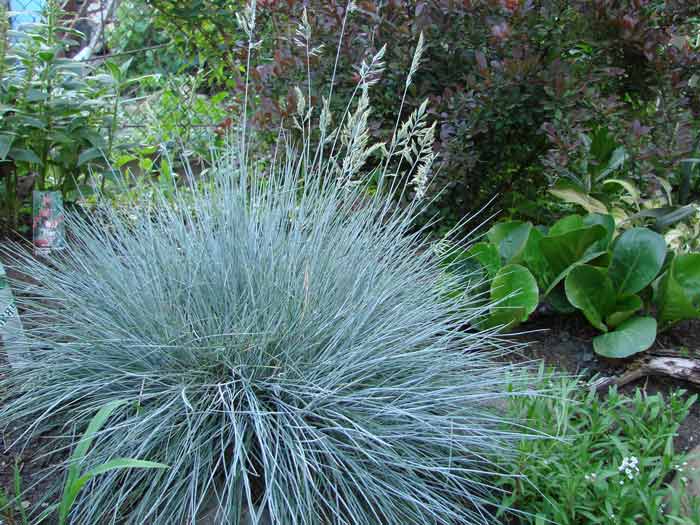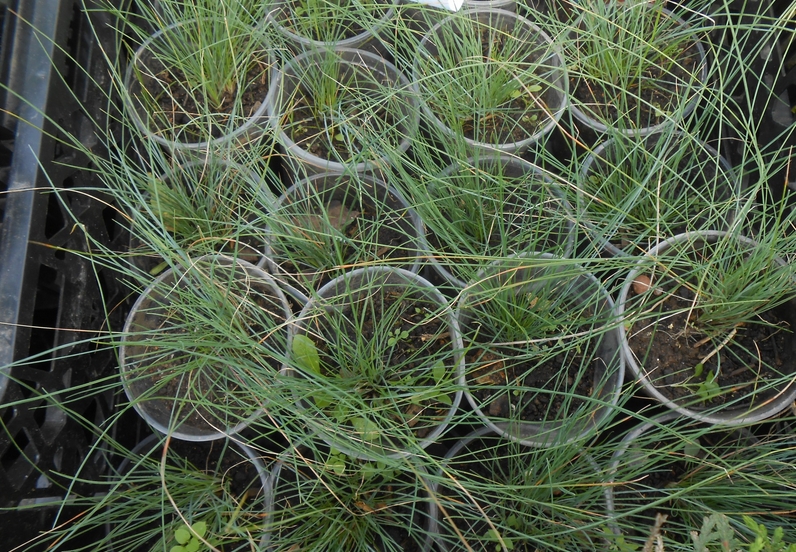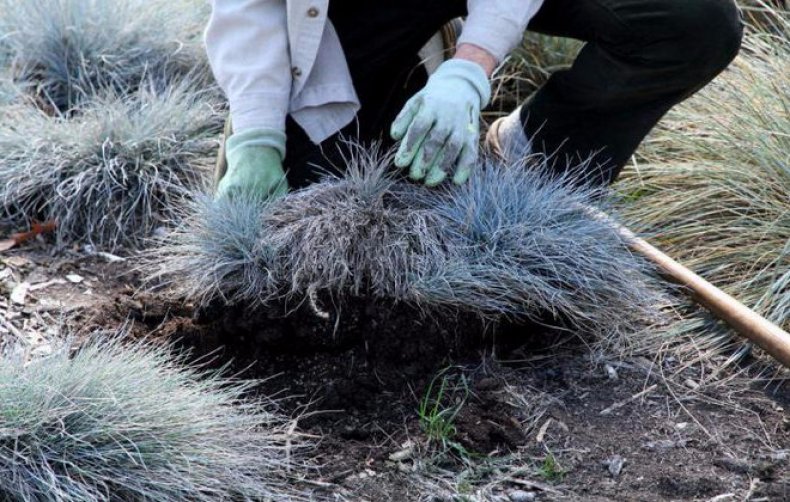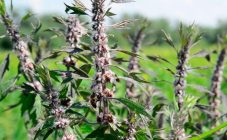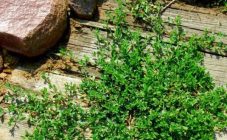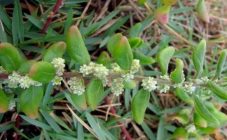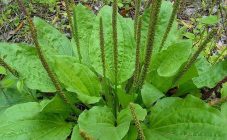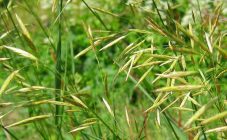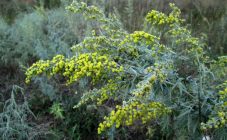Content:
In the Zlakov family there is a very beautiful plant - the grass fescue. Although it blooms and is inconspicuous, the bush itself is distinguished by its spherical shape and beauty. Gardeners love to plant this herb in their backyards because of its attractiveness and simplicity.
Description of culture
Oatmeal grass is a cereal perennial plant, other names are Festuca, straw. There are several types of this culture: bluish, silver, ice, etc. All types of fescue are similar in the structure of shoots and buds, differ in the structure and color of the spikelet.
Usually, the height is up to 60 cm, the shape is spherical, the shoots and leaves are elongated, like needles. The flower is a tall spikelet that rises above the plant. It can be saved or cut.
Fescue grows on rocky or dry soil. It differs in color, it is blue, azure, silver, blue. The plant stands out for its versatility, endurance, rapid growth, airy lightness, graphicality, tremulousness.
The herb is common in temperate, cold and subtropical climates, as well as in the highlands of the tropics. The main places of its growth: in meadows, in areas with different humidity and on any type of soil.
Varieties
There are from 300 to 600 species of cereals in the genus. The main ones are fodder and hay plants. The grass is considered one of three grasses used for the lawn: red and meadow. About 20 species of this culture are used for landscape design.
Names: alpine fescue, amethyst, glacial, green, Valissian (fescue), highest, prickly, Myra (Mayeri), paniculate, sheep, squat, Siberian, gray (Calle).
Soils on which it grows: dry and stony, light, loose, breathable, loose. Fescue does not tolerate moisture well. It is necessary to lay drainage at the bottom of the pit to prevent stagnant water in spring and autumn. Grows well in soil with moderate to low nutrient content. The grass grows well on slopes, in terraced gardens, on retaining walls.
Reproduction
- Seeds. They are sown in open soil in beds or flower beds before the beginning of winter and in the spring. Thinning is not necessary. The transplant is done as the bush grows. Water the young plants a little.
- Seedling. Planted in March in sandy-earthy soil. Then they are transferred to the soil.
- Seedlings are taken from sprouts that have sifted out on their own.
- By dividing the bush. The most common way. In the spring they dig out a bush. Remove the dry center. Divide into parts with a powerful beam. It is not worth doing a lot of scions. The ideal option is to divide into 3 parts.
- Method of separation of uterine bushes. In this way, a large number of shoots are obtained. Adult and strong plants are transplanted into pots in mid-autumn for the winter. The place should be light, dry and cold (about 5 degrees). Separated in February and planted in containers or boxes.Plants are grown to an acceptable temperature and transferred to a permanent location.
Culture properties
There are types that are used for medicinal purposes, there are those that are used to decorate areas.
Industries of use:
- The medicine. The healing properties of fescue have been little studied. It is an antiseptic, a source of vitamins and minerals. Used for the treatment of inflorescences, grains, crushed leaves and stems, root part. Altai fescue is used in the complex formulations of diuretics and fortifying agents. Contraindications for admission and side effects: no scientific studies of the effect of the plant on humans have been carried out, there are no special side effects. Before taking, you should consult your doctor.
- Landscaping areas. Decorate the most unattractive parts of the gardens. They are planted in landscape compositions, flower beds, flower beds, on lawns.
Features and characteristics:
- The grass is gigantic, and sheep, and fescue, glacial titmouse, etc. Plants are similar in their inflorescences, shoots, spikelets. Differ in color.
- The plant is frost-resistant. Sometimes large bushes can freeze slightly. You need to separate the bushes.
- The grass is unpretentious.
- The color is turquoise, green, blue, gray.
- Shade tolerates well.
About diseases and pests
The herb is unpretentious and can grow in any conditions. During the period of scientific observation, it was found that fescue is not susceptible to diseases and pests. It does not get infected from nearby diseased plants. Also, beetles do not eat it, even if the fescue is planted in the ground where there are many pests. The only thing that can happen is rotting due to over-watering.
Sometimes the middle of the bush turns yellow. This means that it is too old and needs to be split and transplanted.
Where the herb can be applied
The herb is used in medicine, as well as for the improvement of land.
Decoration of a garden, flower beds, lawns
Fescue is one of the most popular home and garden plant varieties among designers.
Fescue visual effects:
- The gray and bluish color makes the grass stand out from other plants;
- Airiness and visual lightness;
- Metallic effect;
- Unique graphic texture;
- Harmonizes against the background of flowering plants;
- Combines well with other cultures in composition;
- It looks impressive both as the main thing and as a background plant.
High varieties are planted singly. Medium and low use:
- For curbs and paths;
- Mixborders;
- In a lush flower garden;
- For the foreground to emphasize contrast;
- For alpine slides and rockeries;
- In the heather gardens;
- To decorate a dry stream or wall;
- In beds with rocky mulch;
- For lawn decoration;
- In the composition of the "Wild" ensemble;
- For containers, pots, stone and terrace flower beds.
The most suitable plants for design solutions: garden geranium, cuff, Byzantine chisel, thyme, sage and more. With their lush and large leaves, they emphasize the beauty of fescue.
About the lawn
When choosing a grass, you need to decide what plans for its use: for outdoor activities, sports, or as a beautiful meadow.
Meadow fescue is suitable for quickly growing a beautiful lawn. It is soft and fluffy, even after mowing. In the spring you can land, in the fall there will be a beautiful green meadow. You can also decorate the place under the fruit trees. This herb has been growing for over 10 years. It is necessary to follow all the rules of care: mow, collect mowing residues, water, fertilize.
Fescue normally tolerates drought. But it is better not to abuse this, in open areas it can burn out. Therefore, it is better to plant it in the shade. Also, the grass grows well on any type of soil, but not on damp soil.
Fescue, as a single crop for sowing, does not tolerate trampling. During picnics, playing on the grass, bald spots may appear.Be sure to mow the grass during the summer, otherwise it will gather in tussocks.
Fescue is an unpretentious and frost-resistant herb, a very beautiful plant for decorating plots.
